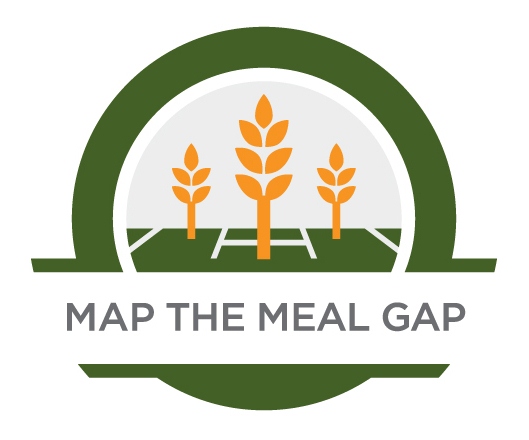Feeding America study: Food insecurity has increased in every Iowa county

DES MOINES, Iowa (May 14, 2025) – 12% of Iowans (1 in 8) and 16.6% of Iowa children (1 in 6) face food insecurity. That’s according to Feeding America’s annual Map the Meal Gap study, out today. All 99 Iowa counties saw an increase in food insecurity in the latest report.
In Iowa, 385,130 persons do not know where they will find their next meal. That includes 120,220 children. The annual meal gap in Iowa is nearly 73 million meals. Additional money required to meet the state’s food needs would exceed $248.3 million.
Food insecurity among subpopulations
The food insecurity rate among Black persons (all ethnicities) in Iowa is 30%. Among Hispanic persons of any race, it’s 21%. And among White, non-Hispanic persons, food insecurity is 10%. Food insecurity estimates are not available for individuals who identify as Asian, Native American, Pacific Islander, other races or ethnicities, or multiple races.
‘Our communities need help’
“While the latest study is based on 2023 data, it confirms the record need for food access we’ve seen every day for the past three years,” said Food Bank of Iowa Interim CEO Tami Nielsen. “We remain deeply concerned about rising costs and continued cuts to poverty relief, which only put more strain on our neighbors facing hunger. We will never stop fighting for full plates and a stronger state, but we can’t continue doing more with less. Our communities need help.”
Child food insecurity tops 20% in 11 Iowa counties
Child food insecurity exceeds 20% in 11 Iowa counties (Appanoose, Black Hawk, Cass, Clarke, Des Moines, Lee, Lucas, Montgomery, Osceola, Wapello and Wayne). Food Bank of Iowa serves nine of them, including hardest hit Appanoose County, where a quarter of kids (24.6%) and 16.9% of residents overall face hunger.
Food insecurity impacts every Iowa county as well as every county, parish and congressional district across the U.S.
Iowa counties facing the state’s highest levels of food insecurity
Food Bank of Iowa serves seven of the top 10 counties facing the state’s highest overall levels of food insecurity.
- Appanoose County, where 16.9% of the population, or 2,070 residents, face food insecurity
- Wapello County, home to Food Bank of Iowa’s Ottumwa distribution center, with 15.2%, or 5,340 residents, facing food insecurity
- Cass County, with a food insecurity rate of 14.7%, or 1,930 residents, is served by Food Bank of the Heartland.
- Crawford County, with a food insecurity rate of 14.6%, or 2,390 residents, is served by Food Bank of Siouxland.
- Clarke County, at 14.2%, has 1,380 residents facing food insecurity
- Des Moines County has a food insecurity rate of 14.2%, affecting 5,500 people.
- Lee County has a food insecurity rate of 14.2%, affecting 4,700 people.
- Clayton County, with a food insecurity rate of 14.1%, or 2,410 residents, is served by Northeast Iowa Food Bank.
- Decatur County, at 14.1%, has 1,080 residents facing food insecurity.
- Lucas County, at 14%, is home to 1,210 persons facing food insecurity.
Polk County data
Polk County’s overall food insecurity rate is 11.5%. Among children, it’s 16%. The 56,970 people affected by hunger in Polk County (including 19,630 children) comprise nearly 15% of the state’s overall food insecure population.
About Map the Meal Gap
This is the 15th consecutive year Feeding America has produced the Map the Meal Gap study. It is the only study that provides local-level estimates of food insecurity and food costs for every county and congressional district. The study builds upon the USDA’s latest report of national and state data, which showed 47 million people, including 14 million children, experienced food insecurity in 2023, the highest rate in more than a decade. Map the Meal Gap emphasizes the need for the public to join the movement to end hunger.
The Map the Meal Gap study is supported by Conagra Brands Foundation, Enterprise Mobility Foundation and NielsenIQ/NIQ. Additional key takeaways from the report can be found on the Map the Meal Gap website along with an interactive map that details food insecurity by geography, income, race and ethnicity.
Methodology:
Map the Meal Gap uses publicly available data from the USDA Economic Research Service, U.S. Census Bureau and Bureau of Labor Statistics to estimate local food insecurity at the county, congressional district and state levels. The study also estimates local meal costs and food budget shortfalls using food price data from NIQ, based on the USDA Thrifty Food Plan, and grocery sales tax data for every county and state in the country.
About Food Bank of Iowa
Established in 1982, Food Bank of Iowa provides nutritious food for Iowa children, families, seniors and veterans to lead full and active lives, strengthening their communities. Serving 55 of Iowa’s 99 counties, Food Bank of Iowa delivers more than 27 million pounds of food (22.7 million meals) to 700 partners annually. Learn more at foodbankiowa.org.
About Feeding America
Feeding America is committed to an America where no one is hungry. We support tens of millions of people who experience food insecurity to get the food and resources they say they need to thrive as part of a nationwide network of food banks, statewide food bank associations, food pantries and meal programs. We also invest in innovative solutions to increase access to nutritious food, advocate for legislation that improves food security and work to address factors that impact food security, such as health, cost of living and employment. We partner with people experiencing food insecurity, policymakers, organizations and supporters, united with them in a movement to end hunger. Visit FeedingAmerica.org to learn more.
Media contact:
Annette Hacker, VP strategy and communications, Food Bank of Iowa, 515-867-2885, ahacker@foodbankiowa.org
